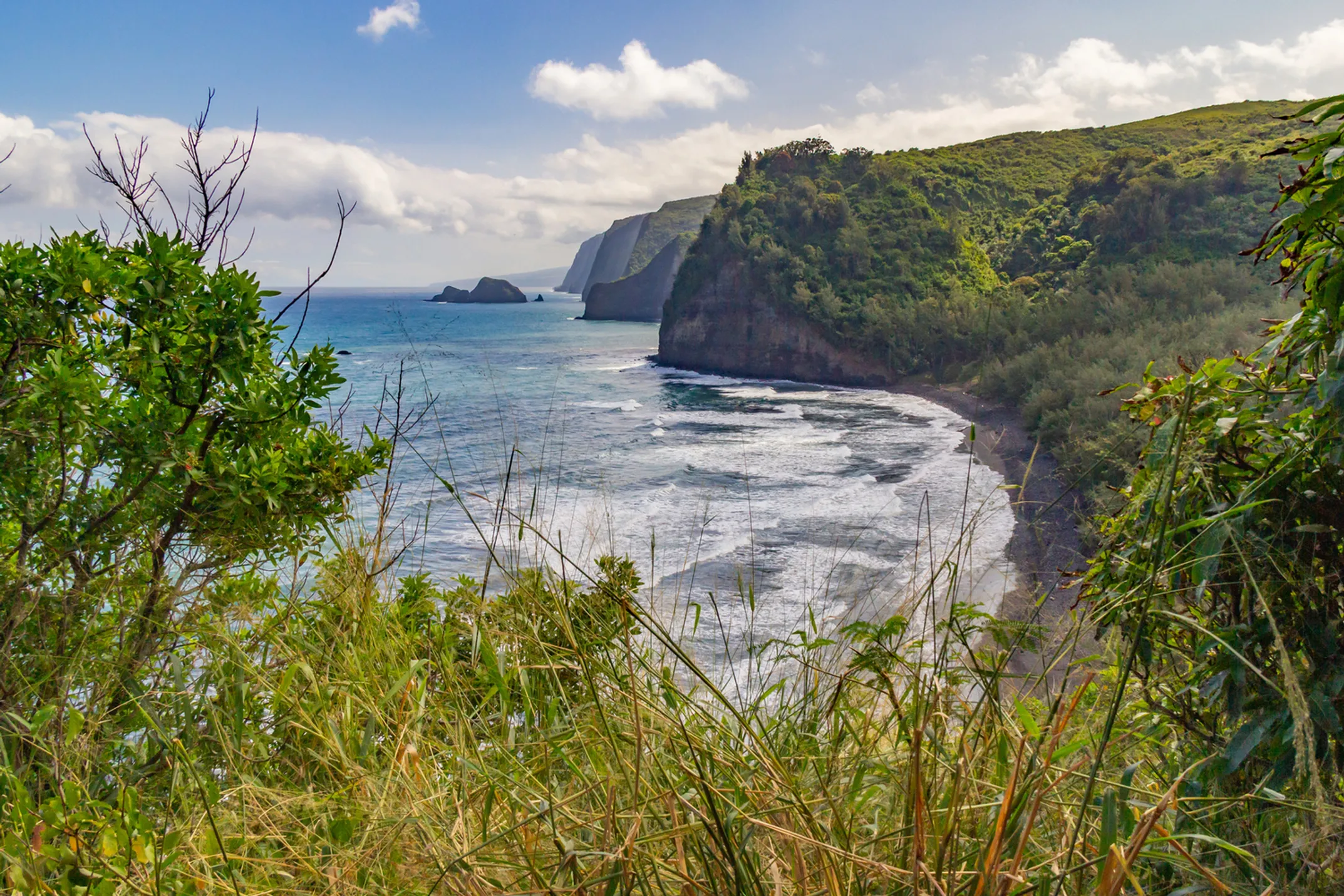
A Guided Hike Adventure Kilauea Iki and Lava Tube
Volcanoes Hiking Guides • Hiking • Volcano • Hawaii

The deeper story - land, legends, and legacy

Written by a Local Expert
Leilani AkoTo truly appreciate Pololū is to understand the epic forces, both geological and human, that have shaped it. The valley isn't just a pretty picture. It's a chapter in the billion-year story of planetary creation and a pivotal setting in the history of the Hawaiian people.
The dramatic landscape of Pololū is the direct result of an ancient and violent past. The story begins with the volcano that forms the foundation of the entire peninsula.
Pololū is carved into the flank of Kohala, the oldest of the five volcanoes that make up the Big Island. At an estimated one million years old, Kohala is so ancient that its lava flows have recorded the reversal of Earth's magnetic field, which occurred 780,000 years ago. It's believed to have last erupted around 120,000 years ago and is now considered extinct.
Geologists classify its lava flows into two main groups: the older Pololu Volcanics, which form the deep base of the volcano, and the younger Hawi Volcanics that capped it.
The single most dramatic event in Kohala's history occurred between 250,000 and 300,000 years ago. A massive portion of the volcano's northeast flank collapsed in a cataclysmic landslide, sending a chunk of the mountain crashing 80 miles across the ocean floor.
This event, which would have triggered a mega-tsunami across the island chain, is what created the sheer, towering sea cliffs that define the coastline today. The view from the Pololū lookout is a direct look at the scar left by this colossal collapse.
After the landslide, the work of water began. For thousands of years, streams fed by the constant rainfall on Kohala's summit have sliced into the volcanic rock, eroding the land and carving the deep, V-shaped valleys like Pololū.
This continuous process of erosion, combined with the slow subsidence of the ancient volcano, created the fertile valley floors and steep, protective walls that would one day make them ideal for human settlement.
The fertile land and fresh water of Pololū made it a vital and cherished place for the Hawaiians who settled here around 1300 AD.
The valley floor was carefully cultivated. It was particularly renowned for its kalo (taro), the staple food of the Hawaiian diet. A special variety, known as kalo Pololū, was grown here, distinguished by its vibrant crimson stems. In the 1800s, rice was also cultivated in the valley.
This agricultural abundance was curtailed in 1906 with the construction of the Kohala Ditch, an ambitious engineering project that diverted water from the streams of Pololū and Honokane to irrigate the vast sugarcane plantations further west, forever altering the valley's ecosystem.
The most powerful stories of Pololū are tied to Kamehameha I. Legend and history tell us that his birth was prophesied, signaled by a bright light in the sky - believed by historians to be Halley's Comet in 1758.
Fearing the prophecy that this child would become a great ruler, rival chiefs sought to kill the infant. To save him, his mother sent him into hiding with loyal guardians in the remote, rugged gulches of North Kohala, in and around the Pololū area.
It was during these isolated early years that he earned one of his names, Kamehameha, "The Lonely One".
Pololū's role in Kamehameha's rise to power was not just as a childhood refuge, but as a source of foundational strength. In 1790, a powerful kahuna (priest) instructed Kamehameha that to conquer the entire island, he must build a great heiau to his war god, Kū, at a place called Puʻukoholā in Kawaihae.
The stones for this sacred temple were quarried from the stream bed on the floor of Pololū Valley. In an incredible display of unity and effort, an estimated 10,000 to 20,000 men formed a human chain stretching for over 20 miles, passing the stones from hand to hand, from the valley to the temple site.
The completion of this heiau, built with the very stones of Pololū, directly led to Kamehameha's final victory and his unification of the Hawaiian Islands. The valley didn't just shelter a king. It armed his destiny.
For Native Hawaiians, Pololū is far more than a scenic destination. It's a sacred landscape where the spiritual and physical worlds intersect, where ancestors rest, and where the mana (spiritual power) of the land remains strong.
Traditionally, Pololū served as a puʻuhonua, a sanctuary where those who violated kapu (sacred laws) could find safety and redemption. This sacred status continues today as a place of spiritual refuge.
The valley, especially the sand dunes behind the beach, contains ancient Hawaiian burial grounds. These iwi kūpuna (ancestral bones) represent sacred connections to heritage that must be respected absolutely.
When visiting Pololū, you're entering a living sacred site. The protocols aren't arbitrary rules but expressions of deep cultural values:
Understanding these cultural layers transforms a visit to Pololū from simple sightseeing to pilgrimage. You become part of a story that spans millennia, connecting ancient volcanic forces to royal destiny, from agricultural abundance to sacred memory.
To leave Pololū is to carry a piece of its mana with you. The image of the cliffs, the sound of the crashing waves, the feeling of the strenuous climb back to the world above - these things stay with you. But the true gift of Pololū isn't in the photos you take, but in the understanding you gain.
It's more than a scenic lookout or a challenging hike. It's a direct connection to the deep past of our islands, a living monument to the forces of creation and the resilience of a people.
The ultimate souvenir from Pololū isn't a handful of black sand or a perfect picture, but a renewed sense of aloha ʻāina - a deep and abiding love for the land.
You can carry this with you long after you've left its shores, and apply it to every sacred place you're fortunate enough to visit.
Getting started
Trail & Safety GuideHiking details & warnings
You are here
Hāwī & Kapaʻau exploration
Pololū
"Long spear" - the valley's name
Wahi Pana
Celebrated place of legend
Kuleana
Deep responsibility and connection
Puʻuhonua
Place of refuge and sanctuary
Iwi Kūpuna
Sacred ancestral bones
Aloha ʻĀina
Love and respect for the land
Puʻukoholā Heiau
Built with Pololū stones
Moʻokini Heiau
Ancient temple near birthsite
Kamehameha Statue
Original in Kapaʻau

Volcanoes Hiking Guides • Hiking • Volcano • Hawaii

